One interesting thing is that the South has sticky rice cakes that are quite similar to those of neighboring countries.
In Vietnamese culture, cakes made from sticky rice are very familiar. Among them, the most prominent are banh chung and banh tet, in addition to many other types of cakes that are extremely diverse. However, not many people know that, in fact, banh nep is a common cultural feature in the East Asian region, with cakes that are quite similar to each other.
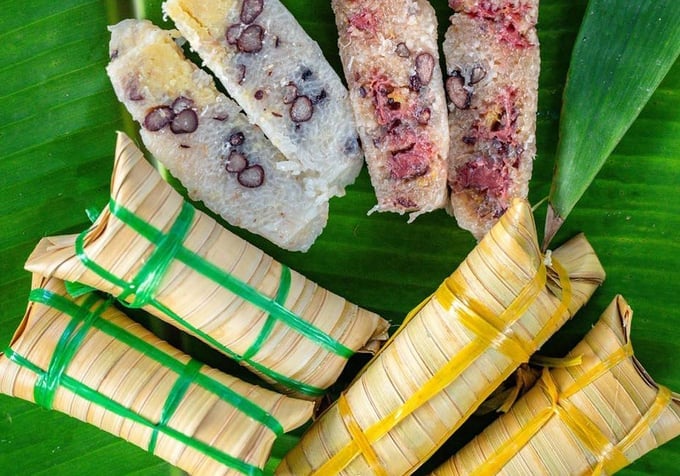
Coconut leaf cake.
All three types of sticky rice cakes popular in Vietnam, namely banh chung, banh tet, and banh ú, are available in China. In Chinese culture, sticky rice cakes are generally called song (粽) or song tu (粽). However, the most common meaning of the name is to refer to banh ú. In addition, to differentiate, each type of cake has its own name, depending on its shape.
Banh chung is called phuong tong (方粽), in which “phuong” means square, so “phuong tong” means square sticky rice cake. This type of cake is believed to have originated from the ancient Baiyue culture. Nowadays in China, banh chung only appears in some areas or ethnic groups that were influenced by Baiyue culture in the past. In addition, because banh chung is a typical cake of Vietnamese culture, the Chinese also call it Viet Nam phuong tong.
The cake is called "giac tong" (角粽), in which "giac" means angle, because this cake has a sharp corner. In addition, it has another name "giac thu" (角黍), but the explanation is somewhat different. In this name, "giac" means horn, "thu" means sticky rice, so "giac thu" means sticky rice cake shaped like a horn. According to legend, in Chinese folklore, there is an animal that has cultivated to become a god named Giai Trai. This is a one-horned goat (unicorn goat) that lives underwater. Perhaps because the cake is often used to worship the god Giai Trai during the Duanwu festival, people make it in the shape of a horn and call it "giac thu".
Banh tet is called truong tong (長粽) with “truong” meaning long, or dong tong (筒粽) with “dong” meaning tube, because this type of cake has a long body and looks like a tube. Many Vietnamese researchers explain that banh tet in the South is a variation of banh chung in the North. There is even an explanation that, because the Vietnamese people came into contact with Champa culture worshiping the god Shiva, banh chung transformed into a round shape symbolizing the linga - the symbol of the god Shiva. However, with banh tet not only present in Vietnam, these hypotheses become less convincing.
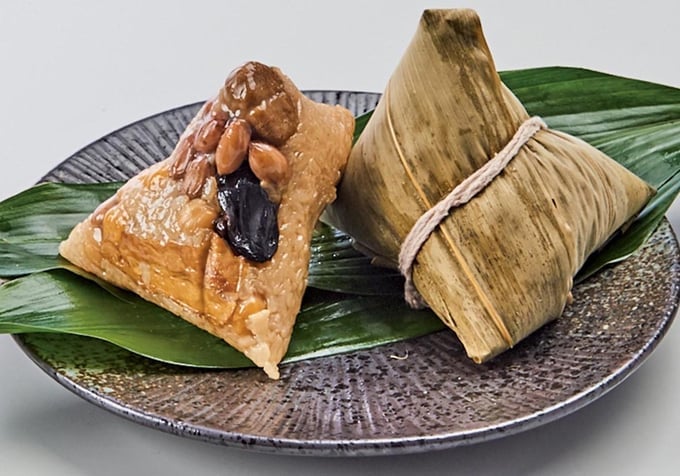
Cake test.
Unlike Vietnamese people who eat sticky rice cakes during Lunar New Year, Chinese people mainly eat them during the Duanwu Festival, also known as the Dragon Boat Festival.
Khao tom mat or khao tom is a popular cake in Thailand and Laos. The characteristic of this cake is a thick layer of sticky rice wrapped in banana leaves. The sticky rice can be mixed with a little black beans. The filling is usually banana, sometimes changed to green beans, taro, pork, etc. When wrapping, two cakes are tied together to form a pair.
Therefore, khao tom mat is a symbolic cake for couples in the land of pagodas. Thai people believe that when monks begin their three-month rainy season retreat, if a couple offers khao tom mat to the monks, they will have lasting love.
Khao tom mat is also associated with the Mahachat festival on the 15th day of the 12th lunar month in Thailand. According to Buddhist legend, this is the birthday of Prince Vessantara, a previous incarnation of Buddha Shakyamuni. He had great compassion and was willing to give away everything he had. Therefore, this festival is considered a charity festival in countries following the Theravada Buddhist tradition, including Thailand.
Ketupat is a very famous rice cake in Southeast Asian island countries such as Malaysia, Indonesia, Singapore, Brunei, Philippines. The main ingredient of the cake is rice or glutinous rice that has been soaked in water made from horse chestnuts. The cake is wrapped in leaves woven together in a diamond shape. In addition, people can mix a little black beans or green beans with the glutinous rice.
There are many interesting explanations surrounding the shape of the cake. Some people believe that the interwoven leaves on the outside symbolize human mistakes, while the white sticky rice inside symbolizes the purified soul. Others explain that the leaves wrapped on the outside have the function of warding off bad luck, while the sticky rice inside symbolizes abundance and happiness, so hanging the ketupat cake in front of the house can ward off evil spirits.
Every year, at the beginning of the 10th month of the Islamic calendar, Muslims around the world celebrate the festival of Eid al-Fitr, marking the completion of the fasting month of Ramadan. In the island countries of Southeast Asia, ketupat cakes are prepared in large quantities by Muslims to serve this important festival.
An interesting thing is that the South - Vietnam has sticky rice cakes that are quite similar to the cakes of neighboring countries. Banh cap is a type of cake that is similar to banh tet, but the body is flat and short, the filling is usually banana or bean. Each cake has two sides, one flat and one curved. After wrapping, the two cakes are tied together, the two flat sides are pressed together, the two curved sides are on the outside. The word "cap" means to join together to form a pair. Banh cap is similar to banh khao tom mat in Thailand.
Coconut leaf cake is made from sticky rice mixed with a little bean, usually banana. The cake is rectangular, flat at both ends, and wrapped in coconut leaves around the body of the cake. It can be seen that coconut leaf cake is similar to ketupat cake in Southeast Asian island countries.
The Khmer people in the South have katum or katom cakes, popular in An Giang province, which are similar to ketupat cakes. Katum cakes are made from sticky rice mixed with a little beans. On the outside, the cake is wrapped in palm leaves woven together, with petals on top. Overall, the cake looks like a pomegranate, but in a square shape.
Banh ba trang is the Vietnamese term for Chinese mixed sticky rice cake. It was originally called nhuc tong, meaning sticky rice cake with meat, in which “nhuc” means meat and “tong” means sticky rice. The Chinese in the Southwest are mainly of the Teochew dialect group, so their pronunciation of “huc tong” is “bah tsàng”, from which the Vietnamese mispronounce it as “ba trang”.
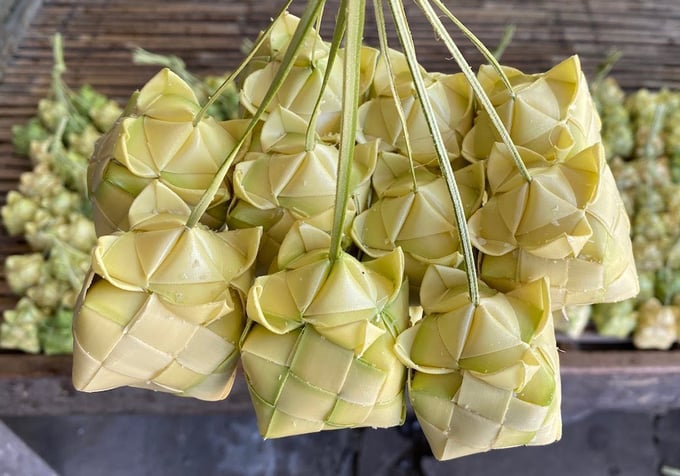
Kà tum cake.
Tra Vinh province has a specialty called Tra Cuon sticky rice cake with the characteristic of three-colored sticky rice. Until now, most researchers believed that this dish originated from Khmer culture. However, it is very likely that it originated from Chinese culture, because in China there is also a completely similar cake. On the other hand, we need to note that this type of sticky rice cake uses salted eggs. This is an ingredient rarely found in Vietnamese and Khmer cuisine, but is very popular in Chinese cuisine. Salted eggs are present in many Chinese dishes, notably dumplings, pia cakes, moon cakes, etc. Tra Vinh, Soc Trang, and Bac Lieu are three provinces with a large population of Chinese people from the Chaozhou group. They may have brought this three-colored sticky rice cake from China to Vietnam, where it was then adopted by the Khmer and Vietnamese people.
Source



![[Photo] Prime Minister Pham Minh Chinh receives the delegation of the Semiconductor Manufacturing International (SEMI)](https://vphoto.vietnam.vn/thumb/1200x675/vietnam/resource/IMAGE/2025/11/06/1762434628831_dsc-0219-jpg.webp)
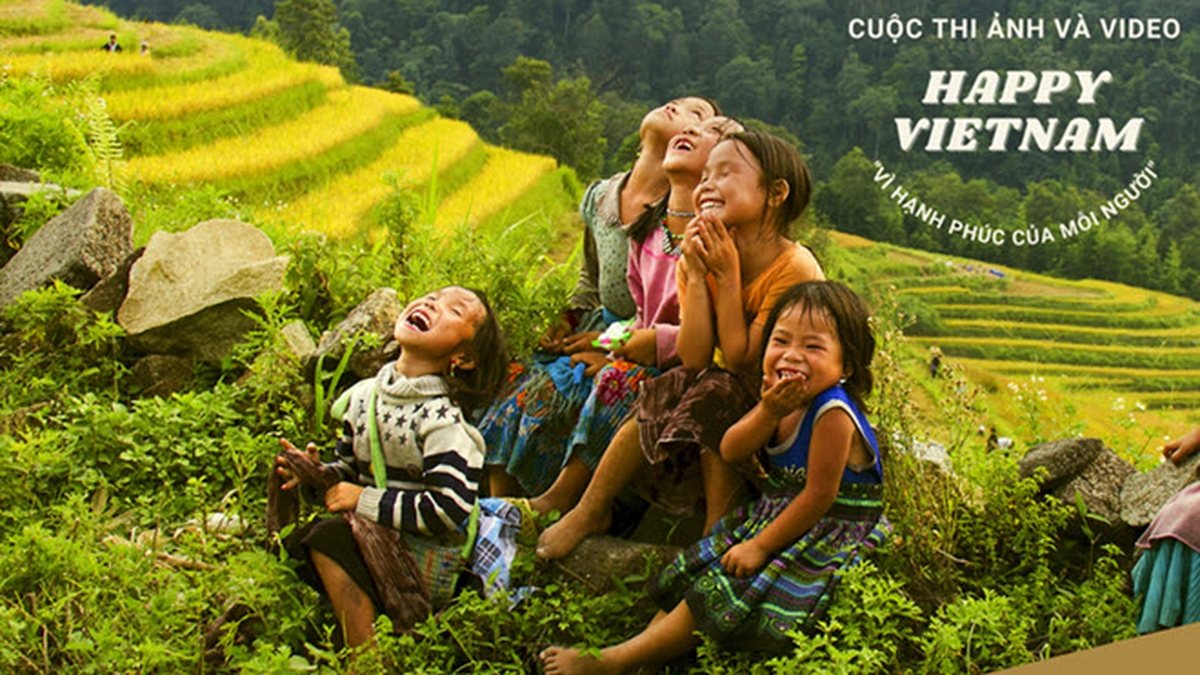
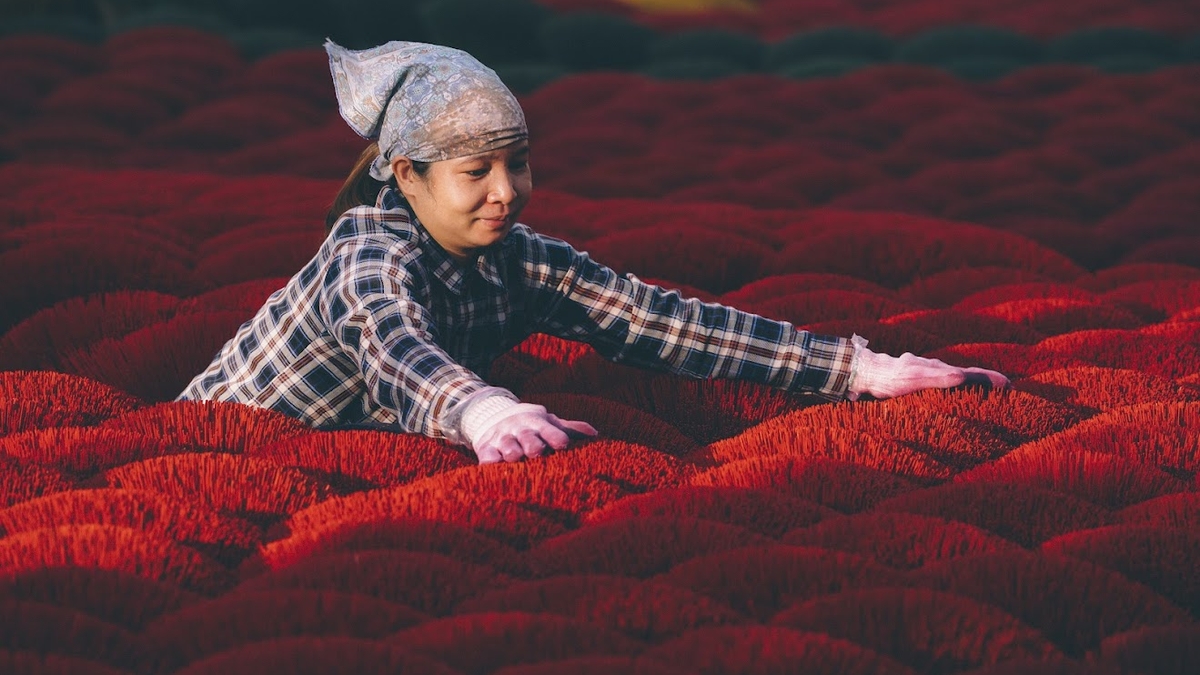

![[Photo] Closing of the 14th Conference of the 13th Party Central Committee](https://vphoto.vietnam.vn/thumb/1200x675/vietnam/resource/IMAGE/2025/11/06/1762404919012_a1-bnd-5975-5183-jpg.webp)


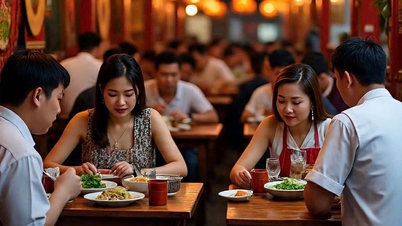

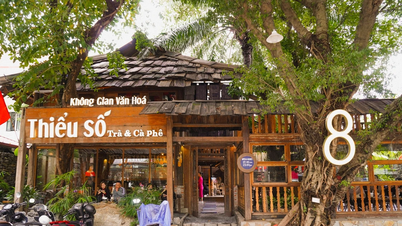










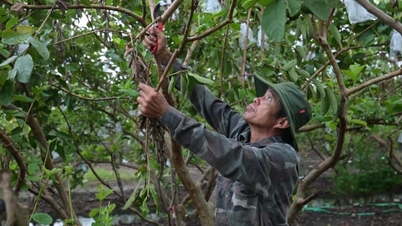




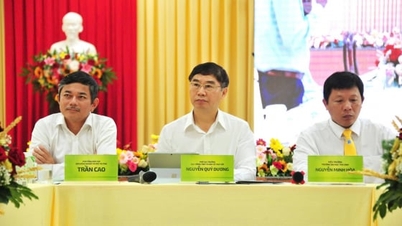





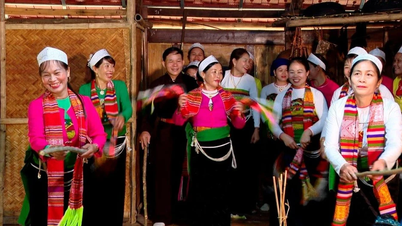




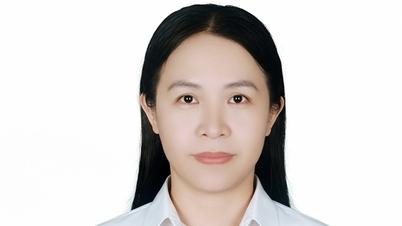
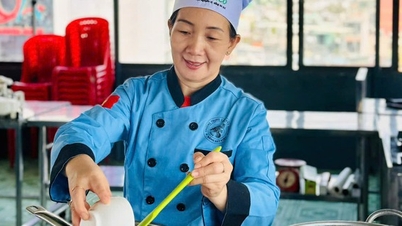









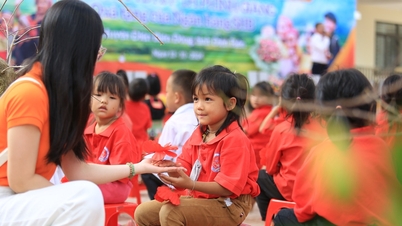



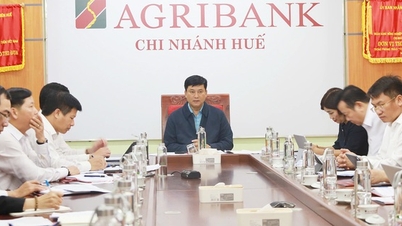




















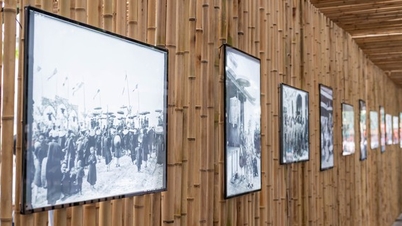


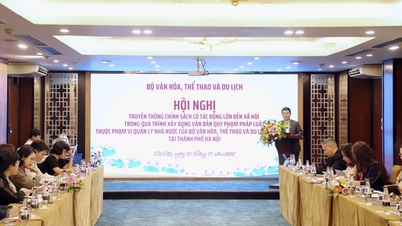




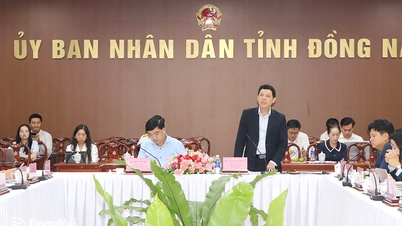

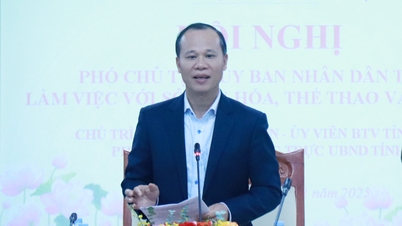



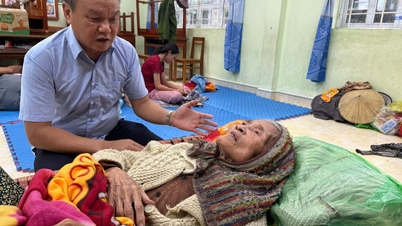

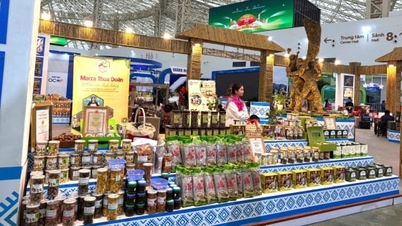












Comment (0)